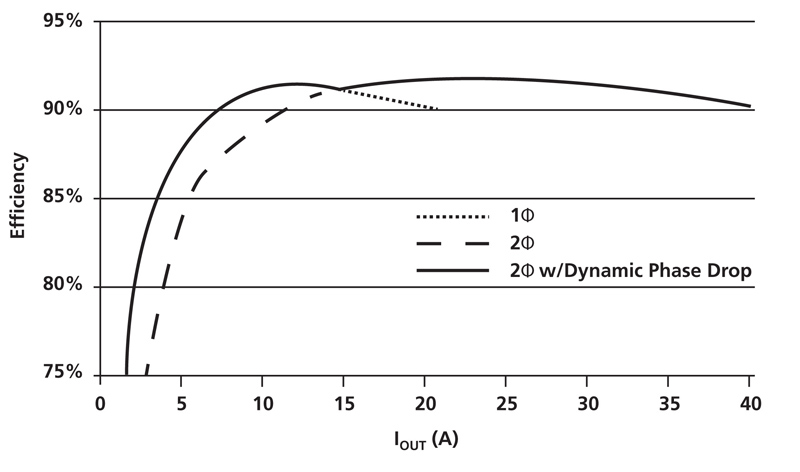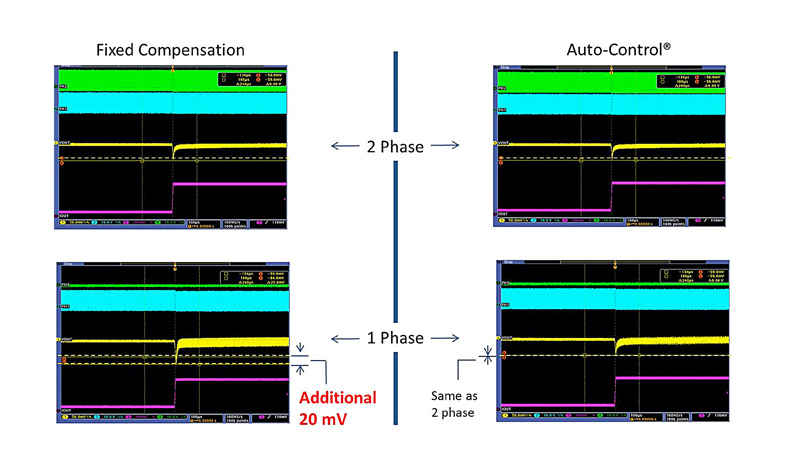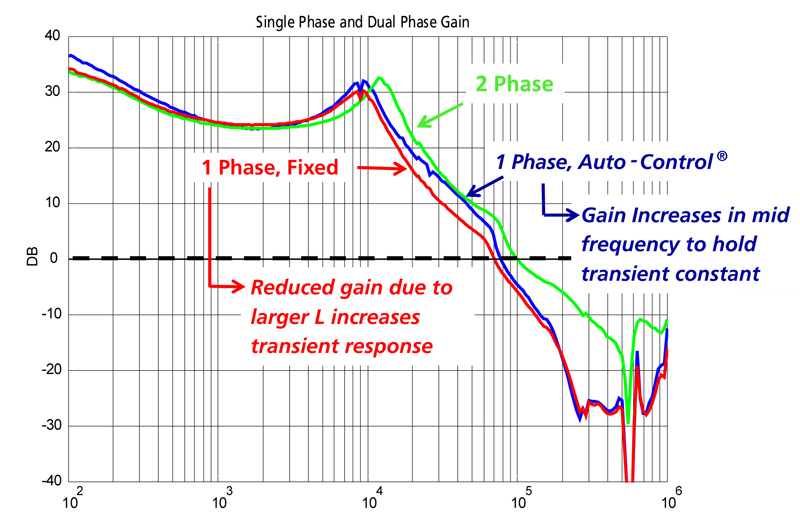Real-Time Auto-Compensation Technique Enables More Versatile and More Efficient Power Systems while Reducing Design Overhead Experienced power supply design engineers know that specific power requirement of their power supplies are often not finalized until late in the design cycle, when the end product is close to completion. Or that the power supply's use may vary in the field depending on its user; this is especially true if a common platform is to be used with multiple end configurations. Additionally, today's power supplies are subjected to increasing efficiency requirements and aggressive cost targets. Each of these cases present challenges to design engineers; fortunately there is a technology that is able to help. This article discusses a new approach to power supply design that is based on a real-time self-adaptive loop compensation technique developed by Powervation; this unique technology is called Auto-Control®. Using an adaptive compensation technique that operates in real-time allows the power supply controller to optimize the trade-off between dynamic performance and system stability on a cycle-by-cycle basis, and enables the use of efficiency improvement techniques that otherwise would require additional cost & complexity to implement. The self-compensating, adaptive approach relieves power supply designers of the burden of compensation, plant characterization, and reduces total design iterations. Additionally, Auto-Control provides a key advantage for designs that drive imprecise or variable loads, and addresses the challenges associated with power supply component parameter drift that occurs over temperature and time. Power supply designers often develop power supplies that are for general use, without knowing exactly how the design will be used in operation, and for platforms that will be used with multiple end configurations. In these cases, a design is developed to operate over a wide range of conditions, and both cost and performance are part of the overall compromise. Alternatively, for designs that are dedicated specifically for a single platform, cost optimization may be more obtainable. However, the process that engineers undertake to achieve this is time intensive, and iterative. Even with an experienced power supply design engineer, both cases can require a large amount of design effort and time spent to balance the various design trade-offs and to optimize key metrics where possible. Finding ways to shorten this development time allows a reduction in development costs, and minimizes lost opportunity costs by bringing products to market quicker. One approach that is able to shorten development time by eliminating and shortening some design steps, while improving system reliability, is to implement a real-time self-adaptive compensation technique. By constantly monitoring the output of the converter, Powervation's Auto-Control self-compensating controllers adjusts the PID coefficients of the loop (Figure 1), on a cycle-by-cycle basis to optimize the converter's performance for that condition, and continues to do so, even as conditions change. Auto-Control allows the controller to continuously modulate the bandwidth of the loop to optimize performance, and eliminates the need for power supply engineers to build in the additional design margin needed for fixed compensation-based designs. The self-adaptive compensation technique: removes the need for the designer to invest large amounts of time attempting to anticipate worst-case conditions, allows designers to reduce some engineered design margin - and the cost associated with the design margin, eliminates the iterative manual tuning of the design's compensation loop, and provides a solution that is optimized over a wide range of operating conditions.

Auto-Control Manages Changes in Power Stage There are several elements that can change in a power supply that Auto-Control's real-time adaptive compensation is able to manage. Some of these include: -Changes in output impedance (e.g., when using phase add/drop) -Component tolerances (i.e., output inductor and capacitors) -Component aging -Temperature -Variations in load (e.g., manufacturer and capacity size of memory DIMMs) -Unknown load (e.g., power modules designed for the general market, where the load may vary greatly over users). Auto-Control provides benefits when dealing with variations such as component tolerances and for designs that may need to power a wide range of loads. Other variations occur over time when the system is in use. Some of these, such as component aging and changes over temperature occur somewhat slowly; while others, such as phase add/drop, can occur very rapidly. Auto-Control's real-time adaptive compensation is able to manage all of these variances by modulating the bandwidth according to the supply's current mode-of-operation and eliminates the need to over-design the hardware for the worst-case mode-of-operation. All of this is done internal to the controller without input or intervention from the user. In Figure 2 we see Powervation's PV3012 control IC use automatic phase add/drop; in this two-phase converter, PV3012 transitions the converter from single-phase mode to dual-phase mode as it crosses the 15 A threshold (solid black line). This is done to maximize efficiency. Without the ability to dynamically perform phase add/drop, controllers follow the two-phase curve (dashed line) from 0 to 15 A, thus running at a lower efficiency in that range.

While the advantages of using phase add/drop to improve efficiency are clear, the technique is not without challenges; adding and dropping a phase changes the output impedance of the multi-phase converter, and thus can affect the converter's transient response and require a modification of the converter's output filter (e.g., an increase in output capacitance to ensure sufficient bandwidth under all modes of operation). Figure 3 shows a comparison of the transient responses of a fixed compensation converter (left) and a converter using Auto-Control (right); both using phase add/drop. In the fixed compensation case, the loop and number of output capacitors has been optimized for two-phase operation (upper left). However, when a phase is dropped (lower left), we see a degradation in transient performance; in this case, an additional 20 mV of undershoot was found.

With the converter using Auto-Control, two-phase operation (upper right) provides a similar transient response as the fixed compensation converter while using the same output filter. However, when the converter transitions to single-phase mode, Auto-Control has re-tuned the system, and the transient performance is maintained; there is no additional undershoot. Figure 4 illustrates the gain-frequency curves for the examples shown in Figure 3. In dual-phase mode, both designs follow the green line. In the fixed compensation case (red line), the bandwidth falls back to a lower value in single-phase mode; this is a result of the change in the converter's output impedance, and the inability of the fixed compensation system to react. For the converter using Auto-Control (blue line), the bandwidth has also been reduced (a result of shedding a phase), but Auto-Control's adaptive compensation has increased the bandwidth beyond that seen in the fixed compensation case (red line), thus maintaining the converter's transient response without modifying the output filter Real-time adaptive control brings a new versatility to designs, and enables designers several advantages related to efficiency, reliability, and time-to-market. Power supplies that incorporate Auto-Control's real-time adaptive compensation are able to maintain stability over a wide range of operating conditions (e.g., varying or unknown loads) and modes of operation (e.g., phase add/drop) without relying on modifications to the output filter that would result in higher solution costs or lower performance. Furthermore, reliability is improved as Auto-Control optimizes its behaviour to adapt to changes and variables such as component tolerances, degradation and aging, and variance over temperature. www.powervation.com